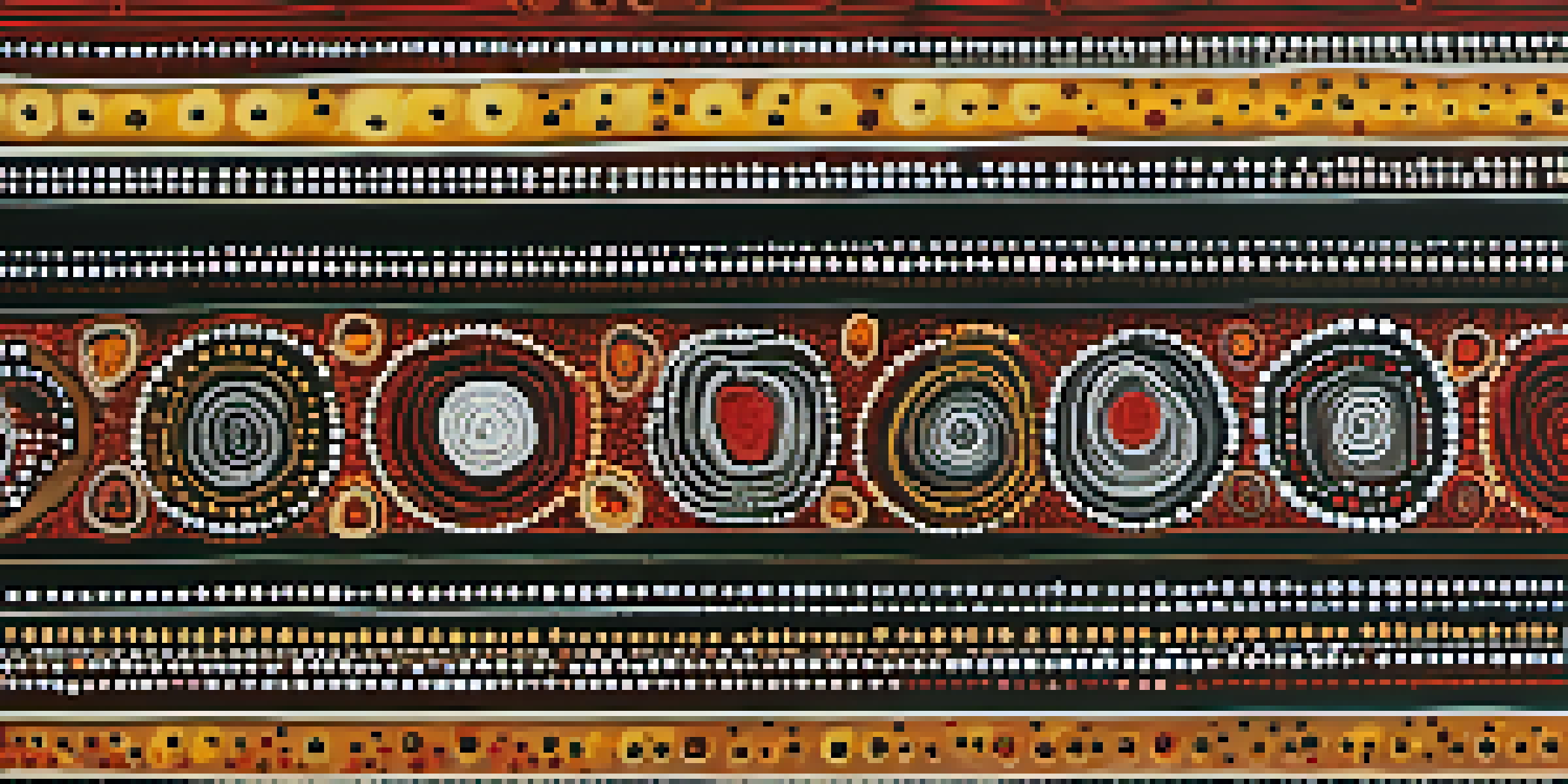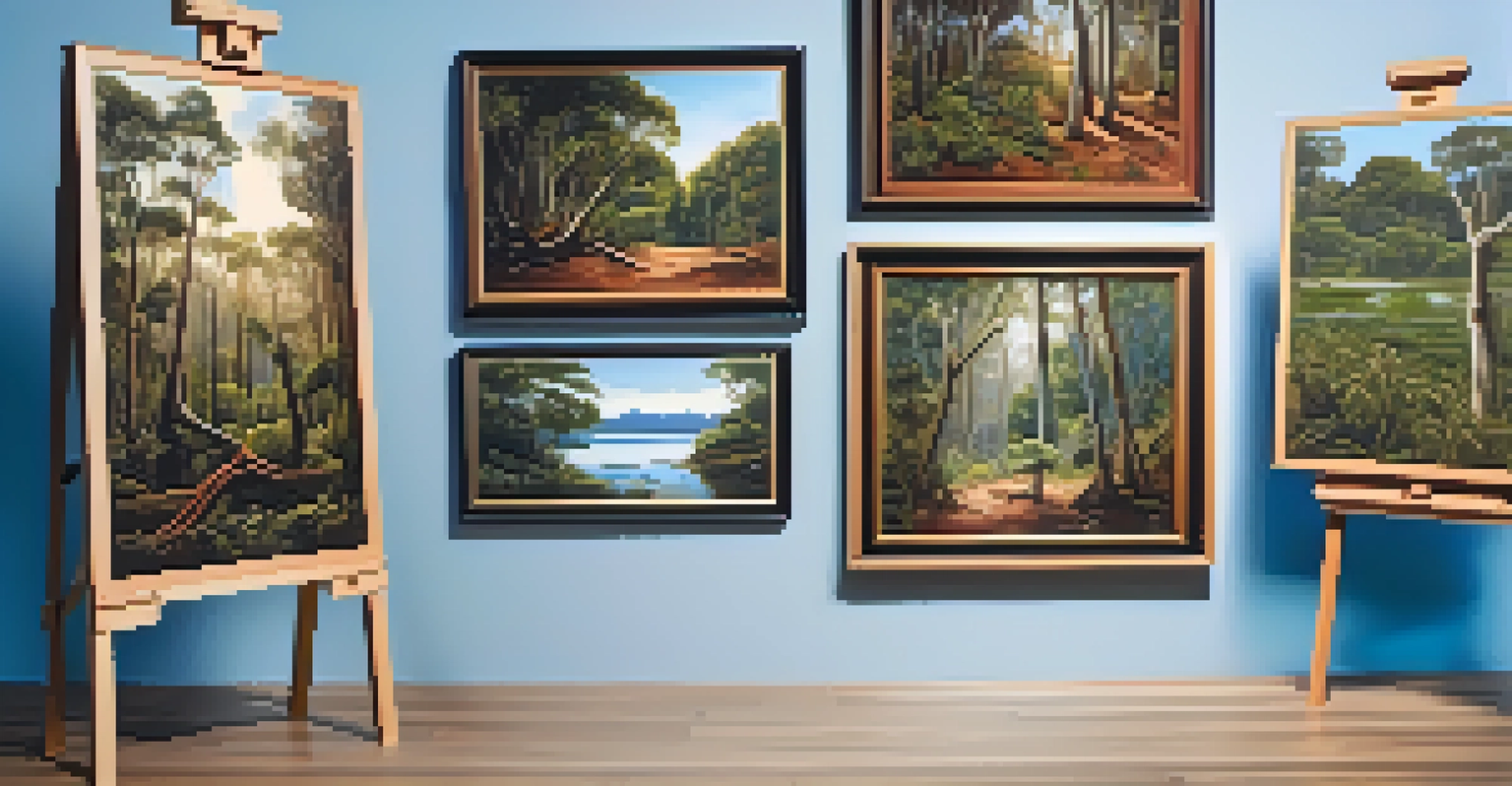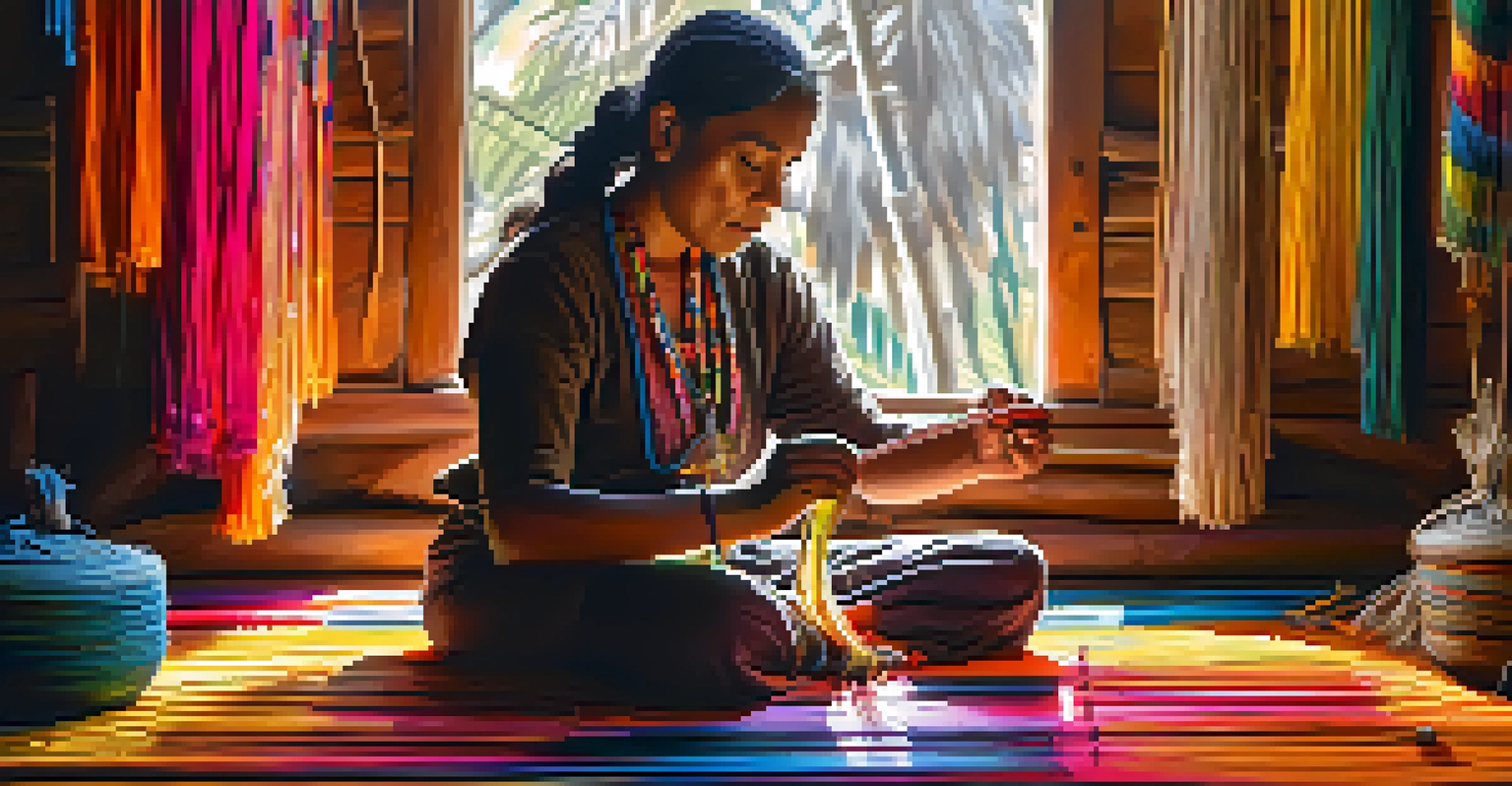Indigenous Art Forms and Their Influence on Global Art

Understanding Indigenous Art: A Cultural Reflection
Indigenous art is not just about aesthetics; it's a vivid expression of culture, history, and identity. Each piece tells a story, often rooted in the traditions and beliefs of a community. For instance, Aboriginal dot paintings convey intricate tales of the Dreamtime, linking the present with ancestral spirits.
Art is a universal language that transcends the barriers of culture and time.
This art serves as a visual language, communicating complex ideas and emotions that might otherwise be difficult to articulate. By engaging with Indigenous art, viewers can gain insights into the values and experiences of these communities. It's a reminder that art can transcend mere decoration, becoming a powerful conduit for cultural expression.
Related Resource
As we explore Indigenous art forms, we uncover a rich tapestry of symbols and meanings that resonate not only within their cultures but also in the broader global context. This understanding fosters greater appreciation and respect for the diversity of artistic expression around the world.
Diverse Indigenous Art Forms Across the Globe
Indigenous art manifests in countless forms, from intricate beadwork and textiles to breathtaking carvings and murals. For example, Native American pottery showcases functional beauty, while Maori carving reflects deep spiritual connections. Each art form is distinct yet shares common threads of storytelling and heritage.

In Africa, vibrant masks and textiles express not only aesthetic beauty but also serve ceremonial purposes, encapsulating community values. Similarly, Indigenous Australian bark paintings illustrate the relationship between people and the land, often depicting traditional hunting scenes and Dreamtime stories. These art forms highlight the unique worldviews of different Indigenous communities.
Indigenous Art as Cultural Expression
Indigenous art vividly reflects the culture, history, and identity of communities, serving as a powerful conduit for storytelling and heritage.
As we recognize this diversity, we also see how these art forms influence contemporary artists, who draw inspiration from Indigenous techniques and themes. This blending of styles enriches the global art scene, creating a dynamic dialogue between tradition and modernity.
The Role of Storytelling in Indigenous Art
Storytelling is a cornerstone of Indigenous cultures, and art plays a crucial role in conveying these narratives. Through visual representations, artists preserve oral histories, myths, and legends, allowing future generations to connect with their ancestry. For instance, the stories depicted in Inuit prints often reflect the harsh realities and beauty of life in the Arctic.
The role of art is not a rarified one, but one that can bring about social change.
These narratives extend beyond mere entertainment; they impart important lessons about community, nature, and spirituality. When we engage with Indigenous art, we are invited to explore these rich stories and the wisdom they offer. It's a powerful reminder of the interconnectedness of life and the environment.
Related Resource
Moreover, as Indigenous artists share their stories with a global audience, they foster a deeper understanding of their cultures. This exchange not only enriches the art world but also creates a platform for dialogue and healing, essential in today's increasingly interconnected society.
Indigenous Art and Its Political Significance
Indigenous art often serves as a form of resistance against colonialism and cultural erasure. Many artists use their work to reclaim their identities, challenging stereotypes and asserting their rights. For example, contemporary Indigenous artists like Kent Monkman use provocative imagery to confront historical injustices faced by their communities.
This political dimension adds another layer of meaning to Indigenous art, transforming it into a tool for activism. Through their creations, artists raise awareness about issues such as land rights, environmental preservation, and social justice. This engagement prompts audiences to reflect on their own roles in these narratives.
Political Significance of Indigenous Art
Many Indigenous artists use their work as a form of resistance, addressing historical injustices and advocating for social change.
As Indigenous voices gain visibility in the global art scene, their work sparks important conversations about representation and equity. This shift not only amplifies Indigenous perspectives but also encourages broader societal change, highlighting the role of art as a catalyst for progress.
Global Art Movements Influenced by Indigenous Art
Indigenous art has significantly influenced various global art movements, reshaping how artists approach their work. The vibrant colors and patterns of Indigenous textiles have inspired contemporary fashion designers, while Indigenous motifs have found their way into modern graphic design. This cross-pollination enriches artistic expression and breathes new life into established genres.
Moreover, the rise of art collectives that focus on Indigenous themes has created spaces where collaboration flourishes. These collectives often blend traditional techniques with modern concepts, highlighting the evolution of art in response to cultural shifts. For instance, the Indigenous Art Movement in Australia emphasizes connection to land while incorporating contemporary practices.
Related Resource
As artists worldwide embrace Indigenous influences, we see a growing appreciation for diverse narratives that challenge mainstream art norms. This trend not only democratizes the art world but also fosters a deeper understanding of cultural interconnectedness.
Preserving Indigenous Art: Challenges and Solutions
The preservation of Indigenous art faces numerous challenges, including cultural appropriation and loss of traditional knowledge. As global interest in Indigenous art grows, so does the risk of misrepresentation and exploitation. This highlights the importance of ethical practices in art consumption and appreciation.
Efforts to support Indigenous artists and communities are crucial for safeguarding their cultural heritage. Initiatives like workshops, mentorship programs, and exhibitions help ensure that traditional techniques are passed down through generations. By investing in Indigenous art, we not only preserve these rich traditions but also empower communities.
Global Influence of Indigenous Art
Indigenous art has reshaped global art movements, inspiring contemporary artists and fostering a deeper understanding of cultural interconnectedness.
Furthermore, technology plays a vital role in preservation efforts. Digital archives and online platforms allow for wider dissemination of Indigenous art, reaching audiences who might not have access otherwise. This combination of traditional practices and modern technology offers promising solutions for the future of Indigenous art.
The Future of Indigenous Art in a Globalized World
As the world becomes increasingly interconnected, Indigenous art faces both opportunities and challenges. Globalization can foster appreciation and recognition of Indigenous cultures, but it also risks overshadowing their unique identities. Navigating this delicate balance is essential for the future of Indigenous art.
Emerging Indigenous artists are leveraging social media and digital platforms to share their work with a global audience. This not only amplifies their voices but also allows them to engage in conversations about cultural identity and representation. This newfound visibility can lead to greater understanding and respect for Indigenous cultures.

Looking ahead, the future of Indigenous art will likely continue to intertwine with global movements, fostering innovative collaborations. By embracing the richness of Indigenous art, we can contribute to a more inclusive and diverse artistic landscape, ensuring that these vital voices remain at the forefront of cultural dialogue.